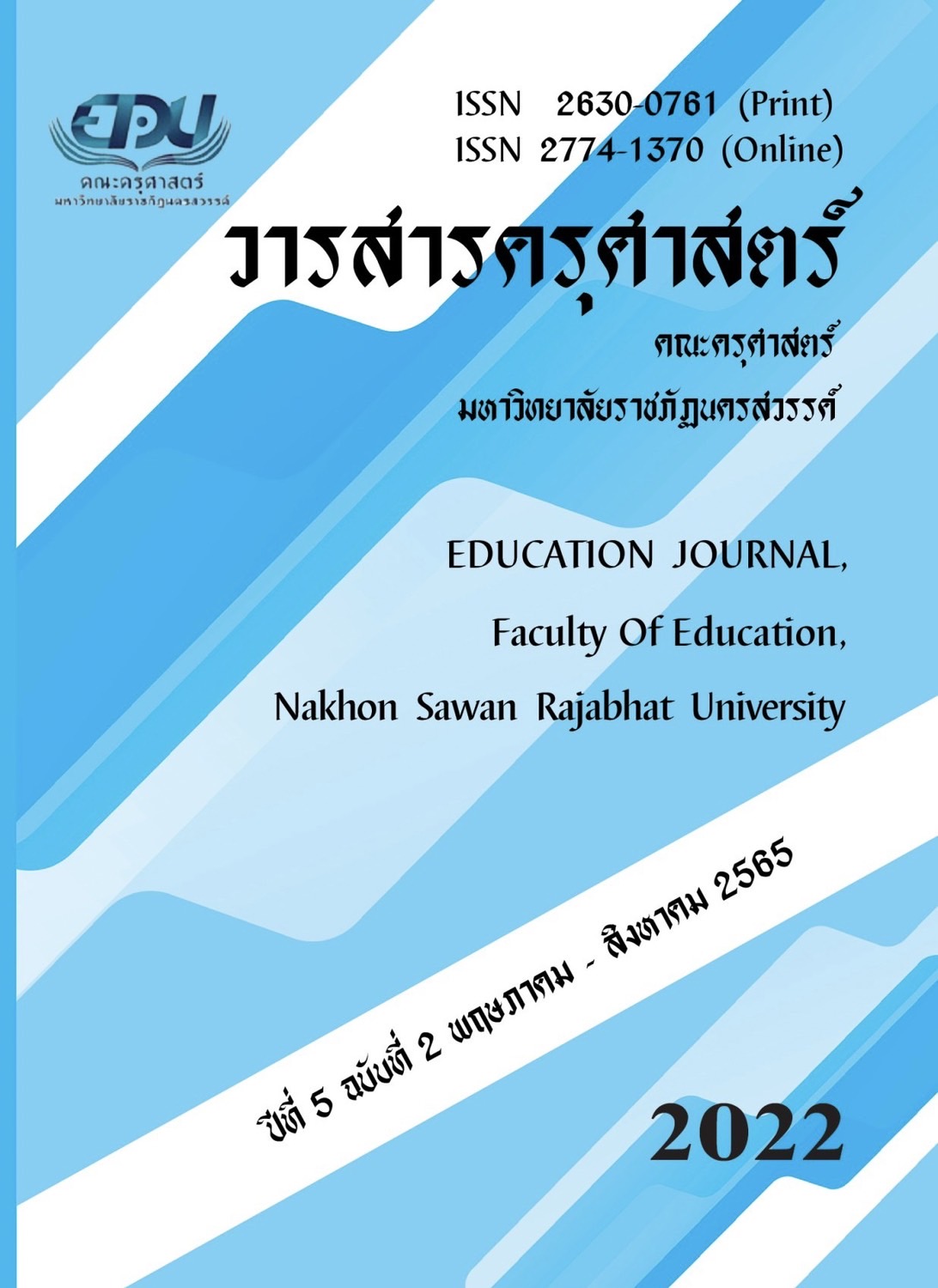The Effects of Active Learning Management with Think – Pair - Share on Mathematical Reasoning Ability and Achievement of Mathayomsuksa 3 Students
Main Article Content
Abstract
The purposes of this research were; to compare mathematical reasoning ability and mathematical achievement of Mathayomsuksa 3 students after using active learning management with think – pair – share technique with a 70 percent criterion. The sample group was 40 Mathayomsuksa 3/2 students at Sriracha school in the 2020 academic year who were selected by a cluster random sampling. The instruments of this research consisted of seven lesson plans, a mathematical reasoning ability test with the reliability of 0.90, and a mathematical achievement test with the reliability of 0.89. The statistics for analyzing the data were means, standard deviation and t-test for one sample. The research results were that:
1) mathematical reasoning ability of the sample group after using active learning management with think – pair – share technique was higher than the 70 percent criterion at .05 level of significance, and 2) the mathematical achievement of similarity after using with active learning management with think – pair – share technique was higher than the 70 percent criterion at .05 level of significance.
Downloads
Article Details

This work is licensed under a Creative Commons Attribution-NonCommercial-NoDerivatives 4.0 International License.
References
กิตติ พัฒนตระกูลสุข. (2546). การเรียนการสอนคณิตศาสตร์มัธยมศึกษาของประเทศไทยล้มเหลวจริงหรือ. วารสารคณิตศาสตร์, 46(530-532), 54 - 58.
จรรยา ดาสา. (2552). 15 เทคนิคในการจัดการเรียนรู้ที่เน้นการเรียนเชิงรุก (15 techniques in Active learning). นิตยสาร สสวท., 38(163): 72 – 76.
ชมนาด เชื้อสุวรรณทวี. (2561). การเรียนการสอนคณิตศาสตร์. กรุงเทพฯ: โรงพิมพ์แห่งจุฬาลงกรณ์มหาวิทยาลัย.
เตือนใจ ตรีเนตร. (2562, 11 กุมภาพันธ์). ครูชำนาญการพิเศษ โรงเรียนศรีราชา อำเภอศรีราชา จังหวัดชลบุรี. สัมภาษณ์.
บุญเลี้ยง ทุมทอง. (2556). ทฤษฎีและการพัฒนารูปแบบการจัดการเรียนรู้. (Theories and Development of instructional Model. กรุงเทพฯ: เอส.พริ้นติ้งไทย แฟคตอรี่.
วิจารณ์ พานิช. (2555). วิถีสร้างการเรียนรู้เพื่อศิษย์ในศตวรรษที่ 21. กรุงเทพฯ: มูลนิธิสดศรี – สฤษดิ์วงศ์.
ศศิธร แม้นสงวน. (2556). พฤติกรรมการสอนคณิตศาสตร์ 2. กรุงเทพฯ: มหาวิทยาลัยรามคำแหง.
สถาบันส่งเสริมการสอนวิทยาศาสตร์และเทคโนโลยี (สสวท.). (2560). ตัวชี้วัดและสาระการเรียนรู้แกนกลางกลุ่มสาระการเรียนรู้คณิตศาสตร์ (ฉบับปรับปรุง พ.ศ. 2560) ตามหลักสูตรแกนกลางการศึกษาขั้นพื้นฐาน พุทธศักราช 2551. กรุงเทพฯ: โรงพิมพ์ชุมนุมสหกรณ์การเกษตรแห่งประเทศไทย จำกัด.
_______. (2561). ผลการประเมิน PISA 2015 วิทยาศาสตร์ การอ่านและคณิตศาสตร์ความเป็นเลิศและความเท่าเทียมทางการศึกษา. กรุงเทพฯ: ซัคเซสพับลิเคชั่น.
สุพรรณี ชาญประเสริฐ. (2557). Active learning: การจัดการเรียนรู้ในศตวรรษที่ 21. นิตยสาร สสวท, 42(188), 3 - 6.
Arends, Richard I. (2009). Learning to teach. (8th ed.). Boston: McGraw Hill Higher Education.
Barragato, A. (2015). Think/Pair/Share and Variations, An Effective Implementation Guide for Active Learning and Assessment. U.S.A: Michigan University.
Bonwell, C. C., & Eison, J. A. (1991). Active learning: Creating excitement in the classroom. ASHE-ERIC higher education report no.1. Washington, D.C.: The George Washington University, School of Education and Human Development.
Cooper James L., Robinson, Pamela. (2000). Getting Started: Informal Small-Group Strategies in Large Classes. NEW DIRECTIONS FOR TEACHING AND LEARNING, no.81, Spring 2000 © Jossey-Bass Publishers.
Meyers, C., & Jones, T. B. (1993). Promoting active learning: Strategies for the college classroom. San Francisco: Jossey-Bass Publisher.


